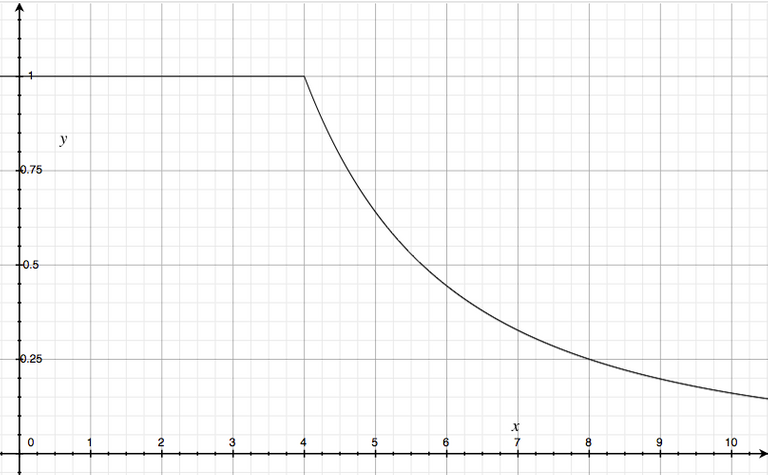As I was digging, as usual, steem codebase to learn more about APIs and functionality for upcoming Steem App that I am writing. I found that, there is planned hardfork coming with some exciting changes.

This hardfork introduces a number of changes that effect how root comment payouts work. They should not impact how normal users use Steem.
Issue #176
The Problem
Every post has some probability of going viral and getting a payout. Users have incentive to enter as many posts as possible to maximize the probability of one of their posts getting rewarded. Rate limiting to once every 5 minutes is too coarse grained.
The Desired Behavior
Users should be posting quality content and should be incentivised to post better content less frequently rather than poor content more frequently. We would like to achieve this without forcing everyone to wait hours or days between posts.

Solution
Each root level comment has a reward weight which impacts the end payout of the post. We are targeting 4 posts in 24 hours. Your first 4 posts in 24 hours will not be penalized. After that, they weight is decreased from 100% based on your average posting frequency. Having a frequency just barely higher than 1 every 6 hours will have very little impact, while spamming will be penalized heavily. This change is aimed to increase the quality of content at the cost of quantity.
Issue #177
The Prolem
For the most part, voting when a post is new works great. The viral nature of great posts quickly rise to the top, however there are many great posts that receive votes but do not receive a great payout at all. We want authors to be able to receive something for their efforts, even if they aren't viral, but do so in a way that isn't easily farmed.
The Desired Behavior
There are several changes being made in this proposal that will achieve this goal.
- Initial payout stake weight time is being reduced to 12 hours.
- After the first payout, a second payout time is hard set 30 days after.
- Curation rewards only count for the first payout (This is already the case)
- Comments will be editable up until the second payout. After the second payout the post is frozen and effectively archived.
- Users will be able to upvote and downvote frozen content without costing voting power and not rewarding reward shares, only costing bandwidth.
- For low memory nodes, we will be clearing comment votes on frozen posts and removing all extraneous data from comments. The only consensus required data for a comment when it is frozen is author and permlink.
Solution
Each discussion goes through a two stage payout. The first one is nearly identical to what currently happens on a new discussion except that we are weighting payout times by 12 hours instead of 24. This should cycle through currently trending content quicker. There is a second voting period set to 30 days after the first payout. This should help posts that don't have immediate viral success accumulate votes and have more consistent payouts in the long run. After the second payout a discussion becomes "frozen". The discussion is no longer editable and new replies are disabled. Users can still vote on comments in these discussions as a "nod" to the author without costing their posting power or awarding reward shares.
Issue #178
The Problem
Due to the controversy of liquidity rewards we are going to evaluate our design and change liquidity rewards if needed. For now, we believe they are not providing enough value to keep around. We have decided to disable liquidity rewards altogether for the time being while we work on a more permanent solution. This is a temporary change. The internal market not charging transaction fees may be enough of an incentive to trade internally that we may not need liquidity rewards at all. All of these aspects will go into our final decision. We encourage the community to voice their thoughts on liquidity rewards and potential changes in a civil and objective manner.
Solution
There has been a lot of controversy surrounding liquidity rewards. We are refraining from making a judgment at this point but want to spend more time reviewing their impact. We do believe that in their current form the liquidity rewards are simply too much for the value thy provide. As such, we are temporarily disabling liquidity rewards until we can design a better solution. In the meantime, a transaction fee free market should be incentive enough for users to continue to use the Steem internal market.
Issue #179
The Problem
The current target average block size is too large and rate limiting is not having a meaningful effect on the blockchain. The combined effect of these changes allows the target average block size to be reduced by 4 times of what it is now and gives the witnesses more freedom to determine the target average block size.
Solution
The average block size calculation is too high. We are reducing the minimum block size limit from 128k to 64k and changing the average block size threshold from max_block_size / 2 to max_block_size / 4. The net result is that the average block size threshold can be 4 times smaller. If witnesses chose to vote this way, it will make triggering transaction bandwidth limits easier, which is currently not applying except in the most extreme circumstances.
Issue #184
The Problem
Wallet locked but update_account transaction broadcased anyways
Solution
Fixed a bug in the cli wallet that incorrectly allowed the wallet to attempt to broadcast an update account operation from a locked wallet. The broadcast would fail but created a poor user experience.
Issue #186
The Problem
It appears as though the account_history plugin might not be tracking some of the new operations:
- request_account_recovery
- recover_account
- change_recovery_account
Solution
Added recovery operations to account history so they can be tracked more easily.
This hardfork is scheduled for 2016-07-26T15:00:00 UTC (11:00:00 EDT).
Release note can be found here
#steem #steemit #hard-fork #updates
This is explained so well and in terms everyone can understand without being overly technical. Many thanks for creating this post. The only question I have is about liquidity rewards. Is that the payout of steem power or steem dollars? Maybe others have that question too.
Contribution Rewards:
per round)
STEEM per round) or 0.750% per year, whichever is greater.
year, whichever is greater
Power Rewards:
divided among all Steem Power holders.
see: Steem Whitepaper, page 35.
This is so helpful! I read the white paper but must have missed this part somehow.
Warning: some of the details of this, was updated with last hard forks. But more less it should give you an idea.
Understood. You are a valuable asset to steemit. I'll do my best to pass on the knowledge when I see others with similar questions.
Good stuff. Thank you for sharing!
Yes, changes are great. Better content is being rewarded, penalties for abusing the community with bad and frequent content.
2016-07-26
Nice catch, thanks! Updated it, I suppose github note also needs an update!
Steemit Quotes Of The Day –

Sometimes life is tough. 諦めない
Btw i upvote your post because it is a great content :)
Thanks, nice animation!
If this is true why would anyone vote after the first payout? Nothing will change except now there is a time limit of maximum 30 days to reward any post.
Why would you think no one will vote after 30 days? Blog followers will be the first payout voters most likely but someone who finds post later on, maybe even after year, they still might like/vote the post. And it gives content creators long term income. So it is good to think long term when you write your content. And internet is full of articles and posts from years back, they are still helpful in most cases unless of course, content is time relevant.
If most people don't vote after 1 day, what makes you think most people will vote 29 days later? But the difference is now you're limited to 30 days while before you weren't. Your posts now grow old and die.
Well, the way I understood is that. Now we will have 12 hours for first payout which is shorter period for post to stay on top of the post on trending page. After that period it is payed out and other post will come to visibility and they go down, but the post which has real good value keep getting votes for second period which starts after first 12 hours and so on. I think this will increase chances to more posts to get spread of votes instead only few getting major votes.
All this still makes my head spin, but this helps immensely. Keep on educating those of us who are more visually oriented and not coders.....;-) ~ljl~
of course
Ummm.

there is a typo in your text: Issue
The Prolem